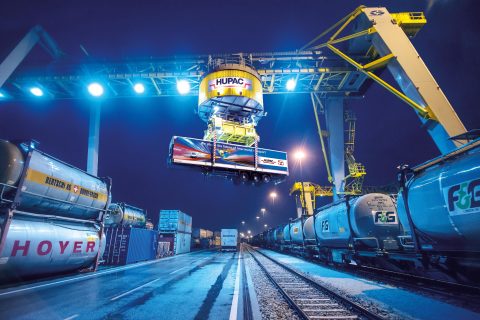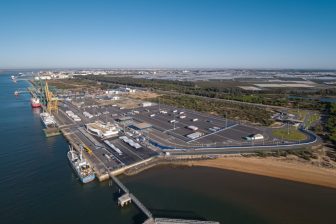
Hupac reroutes traffic in face of Danish pocketwagon ban
Hupac has offered alternative routes to Denmark and Sweden as it is currently not permitted to operate pocketwagon trains in Denmark. The ban will be lifted with the right measures, which the intermodal operators says to prepare.
On 8 January 2019 the Danish Transport Ministry (DtM) banned the circulation of pocket wagons on the Danish railway network. This was in response to the tragic accident on 2 January, where parts of a semi-trailer train came off and hit a bypassing passenger train, resulting in eight fatalities. The safe use of pocketwagons is currently not guaranteed, concluded the DtM.
Documentation
“The ban has a validity of fourteen days. It can be lifted if the single railway undertaking submits documentation that proves the correct fixing of the kingpin of the semi-trailers into the supporting bock of the pocket wagon. Hupac cooperates with its railway partners in order to fulfil these additional documentation requests and to get the permission to circulate again with its fleet of pocket wagons”, the company said.
In order to maintain the traffic in this difficult environment, Hupac has developed alternative solutions of two of its main services across the stricken country. The line between Busto Arsizio in Italy and Taulov in Denmark now runs to and from Hamburg. The line between Cologne in Germany and Malmö in Sweden runs without pocket wagons, but with containers and swap bodies. With this offer, we can handle almost 50 per cent of the transport demand on our relation Italy/Germany/Scandinavia, the company said.
The ban
According to the Danish ministry, the ban is introduced to secure rail safety. Because it has become clear that weather conditions played a role in the accident, it also requires that BaneDanmark and the railway companies ensure that all freight transport on the Great Belt Bridge takes place under stricter conditions with respect to freight trains’ speed with heavy wind conditions.
The freight train involved in the accident was operated by DB Cargo, which announced last week to halt all operations of its ‘beer train’ in Denmark, until it has fully grasped what went wrong in the deadly accident. “When we feel that with a very high degree of security we can start driving the train, then we do it, and we do not do it before. We would rather go 25 extra rounds to ensure safety than sending the trains too early back on the rails”, the company’s communications director Jan Wildau said in an interview with the Danish TV 2.
Great Belt Bridge
The accident was the most serious rail accident in Denmark since 1988. Another sixteen people were injured. The passenger train was on the way to Copenhagen. The freight train was headed towards Funen.
The bridge is a 18-kilometre long passage connecting the islands Funen and Seeland. One part of the bridge is lower than the other part. Every day about 21,000 passengers travel by train over the 18-kilometer-long Great Belt Bridge between the islands of Zealand and Funen.
Also read:
Denmark concludes: ‘Safety of pocketwagon not guaranteed’
DB cargo halts operations beer train after deadly accident Denmark




